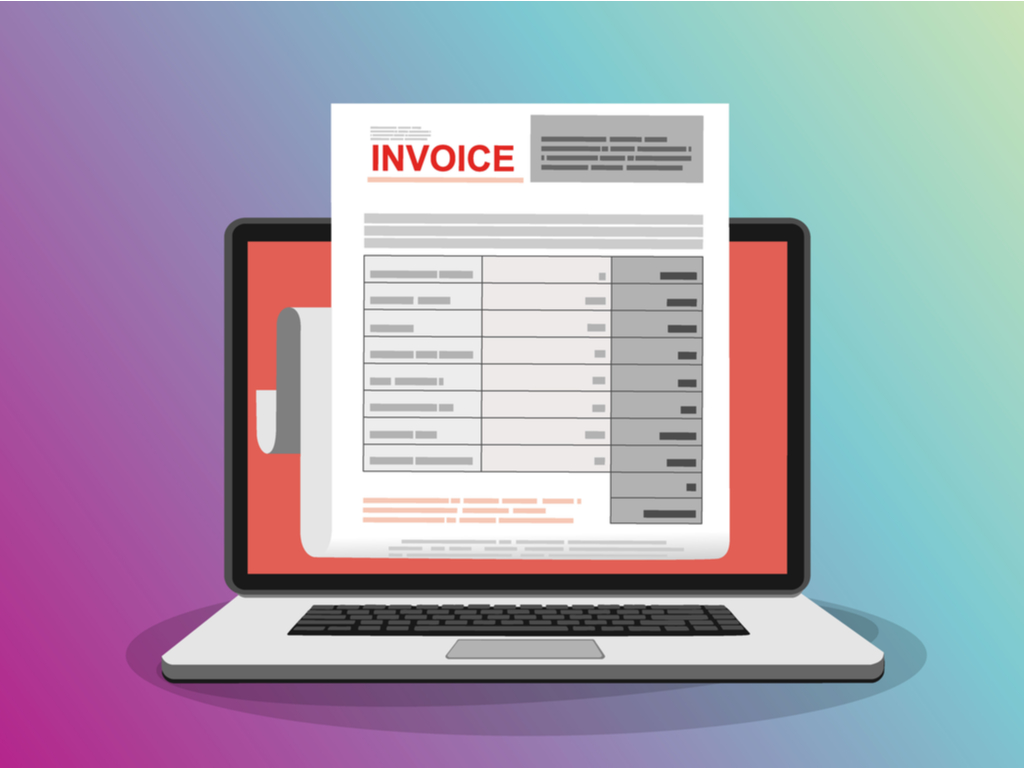How Converting Image Data to Invoice can Increase Accuracy

Running a successful business involves managing numerous details and staying organized. One of the most important but often overlooked tasks is keeping accurate records, particularly regarding invoicing. Fortunately, modern technology has made this process much easier by allowing businesses to convert image data into invoices. By doing so, accuracy is increased, and time is saved. In this blog post, we'll discuss how Image Data to Invoices can help you get more organized and improve accuracy.
How converting image data to invoice can increase accuracy
Improved Efficiency
Manual invoice processing takes a lot of time and often involves errors. By incorporating optical character recognition (OCR) software into the accounts payable process, businesses can easily convert paper invoices to digital forms with accurate data extraction. OCR software also has machine-learning capabilities that streamline the process and improve accuracy. This allows businesses to extract data from invoices quickly, eliminating human errors and significantly reducing processing time.
Reduced Errors
Accurate data extraction is essential for invoicing processing, and OCR can help businesses achieve this. By leveraging OCR solutions, businesses can reduce errors in data entry and increase accuracy. OCR automatically reads and extracts data from paper invoices, ensuring that all information is captured accurately and stored in structured formats. This eliminates manual errors, allowing businesses to process invoices quickly and accurately.
Improved data entry:
OCR invoice processing can also improve data entry speeds. The OCR process converts image data into structured digital formats, eliminating the need for manual entry. This makes it easier and faster for businesses to process invoices, reducing processing time significantly. Additionally, OCR reduces errors when manually entering data, ensuring that invoices are accurate and complete.
Faster processing:
With OCR, businesses can quickly and accurately process invoices. This reduces the time it takes to complete the accounts payable process, allowing businesses to focus on other important tasks. Additionally, OCR solutions can capture data from various sources, such as PDFs, scanned documents and other image formats, making it easier to process invoices.
Reduced data loss:
Data loss can be a major concern when processing invoices, but OCR technology eliminates this risk. By using automated invoice processing, businesses can ensure that all data is stored securely and accurately, reducing the risk of data loss. Additionally, OCR solutions capture information in structured formats, making accessing and retrieving data when needed easier.
Improved data analysis:
OCR invoice processing can also help businesses improve their data analysis capabilities. With OCR, businesses can capture more accurate and complete information from invoices, giving them a clearer picture of their accounts payable process. This makes it easier to identify areas for improvement and spot trends in invoice processing, helping businesses make better-informed decisions.
Conclusion:
Converting Image Data to Invoices can provide significant advantages for businesses. Automating data entry and reducing errors improves invoice data accuracy and ensures that payments are made correctly.
Additionally, it reduces the time it takes to process invoices, which can help prevent late payments. It also ensures that data is preserved, even if the original invoice is lost or damaged. Finally, automated data entry enables businesses to analyze their invoice data more effectively and make more informed financial decisions. For these reasons, image data conversion is becoming increasingly popular with businesses of all sizes.
Handling PDF Invoices with Image Data Involves converting the image data into digital format, extracting the relevant data from the invoice, and validating the data for accuracy.
FAQ's
How can I improve my invoice accuracy?
One of the best ways to improve invoice accuracy is to use OCR (Optical Character Recognition) software. This automated tool can convert image data into structured formats, eliminating manual errors and improving accuracy. Additionally, OCR can help businesses process invoices faster and reduce the risk of data loss.
How do I improve OCR accuracy on an image?
The accuracy of OCR depends on the quality of the image. To ensure accurate results, using a high-quality image with a good resolution and minimal noise is important. Additionally, it's important to ensure the text is clear and legible, as OCR algorithms can struggle to identify unclear or distorted text. Using a preprocessing image tool can help improve the accuracy of OCR results.
Many Businesses Use Image Data to Invoice, especially those that deal with paper-based invoices or receive invoices in PDF format. Retailers often receive invoices from suppliers in paper or PDF format. They use OCR software to extract data from the invoices and automate the invoice processing and payment process.
How to use image preprocessing to improve the accuracy of Tesseract?
Image preprocessing is an important step in improving the accuracy of Tesseract, a popular OCR tool. To improve accuracy, it's important to use high-quality images with good resolution and minimal noise. Additionally, it's recommended to enhance the image's contrast and apply sharpening filters to make the text more legible. Finally, it's also important to use a text normalization tool to reduce the variability of characters and fonts. This will improve Tesseract's accuracy in recognizing text from images.
How accurate is an image to text?
The accuracy of the image-to-text conversion depends on various factors, including the quality of the image and the OCR tool being used. Generally speaking, OCR solutions are considered very accurate, with many boasting accuracy rates of up to 99%. However, it's important to remember that accuracy can vary depending on the quality of the image and other factors.
What are the benefits of invoice processing with OCR?
The main benefit of invoice processing with OCR is that it converts image data into structured data. This eliminates manual data entry, making it faster and more accurate. Structured data also makes it easier to store, analyze, and retrieve data when needed.